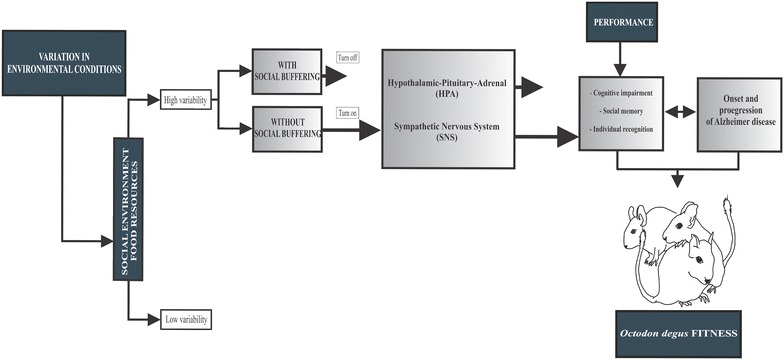Fig. 1.

Conceptual model of a program comprising interdisciplinary research proposed in Octodon degus. Variation in environmental conditions (e.g., presence or absence of conspecifics, food resources, predators, temperature) can perturb an animal´s homeostasis, and should be act has a potential stressor. Stable social environment in which the presence of the social partners reduce stress responses either before, during, or after stressor exposure to stressors has been associated with control ongoing activity of the HPA of the hypothalamic–pituitary–adrenocortical (HPA) system, which act as the body’s primary stress-responsive neuroendocrine system. Additionally, positive social interactions also have positive effects on other physiological responses, particularly those of the sympathetic nervous system (SNS). Whereas instable social bonding or social isolation during infancy have the opposite effects, which in turn produce more frequent activation of the HPA and SNS systems. The increase in this endocrine activity was associated with more rapid cognitive impairment associated with learning, memory processes and brain structures involved in social behavior in particular those associated with social bonding. Positive social interactions can partially ameliorate this brain injury, and has positive effects in health. Then, social interactions or lack thereof, superimposed to aging process, can determine a progressive amyloid formation and deposition, and neurofibrillary tangles in the brain and may start process associated to AD. Understanding how Octodon degus perceive and process their sensory environment under different factors superimposed upon the aging process, is vital to understand whether brain aging is successful or unsuccessful, and examines the disease states
